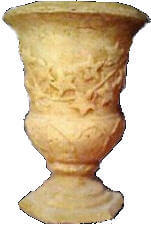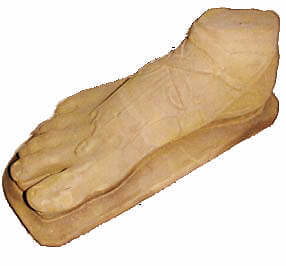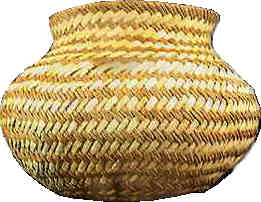
Archaeologists Find Ancient
Shrine for Baal near Tel-Aviv(Original report by Jeff Lindsay, copyright © 2001)
 | Archaeologists Find Ancient Shrine for Baal near Tel-Aviv(Original report by Jeff Lindsay, copyright © 2001) |
A remarkable shrine dating to 1500 B.C. has been discovered near Tel-Aviv at a freshly unearthed site on the hill named Sh'uhn. This long-entombed Canaanite shrine offers a well-preserved altar featuring idols that depict three manifestations of the ancient god Baal. The three manifestations are shown in the form of a vase, a large foot, and a stylized basket made of loosely woven cords. Proto-Phoenician inscriptions indicate that the vase represented the joys of fermented beverages, while the foot represented the marching of soldiers, standing as a symbol for victory in war, and the basket represented vast amounts of wealth showered upon the elect of Baal.
 |  |
 |
| Objects of worship representing the god Baal from a newly discovered Canaanite shrine. | ||
Other inscriptions and drawings from this shrine on the hill Sh'uhn show that large crowds of mostly intoxicated men filled the spacious assembly hall before the altar, where large, soft seats were provided as the men worshipped for hours in a reclining position. Worship appeared to involve frenzied yelling and shouting before the manifestations of Baal on the altar, and would go on for hours, interrupted frequently by slave women who would bring ale and food for the men.
While archaeologists are still puzzling over the full implications of this find at the Sh'uhn site near Tel-Aviv, it is fascinating to find that ancient men would worship on Tel-Aviv's Sh'uhn the idols of Vase-Baal, Foot-Baal, and Basket-Baal.
The three manifestations of Baal were apparently worshipped at least once a week and sometimes daily for many decades until civilization in the region suddenly collapsed.
Interestingly, the traditional consort of Baal, Ashtoreth, is depicted only in a diminutive carving at the back of the shrine, where she is removing handfuls of her hair in apparent frustration. Scholars are puzzled about her garb, which appears to be traditional robes of mourning for a widow (e.g., a "Foot-Ball widow"), a most puzzling depiction given the large inscription above the altar proclaiming that "Baal lives forever."
Some inscriptions warn of violent outbreaks that could occur during Baal worship. When the declarations of the priests (depicted in striped robes) were perceived as unfavorable omens, the participants would often become violent in protest. One inscription speaks of yelling, screaming, and tossing of furniture. It appears that such tantrums become so closely associated with Baal worship that they were described, loosely translated, as "going Baalistic."
Further research is needed to better understand the relationship between ancient Baal worship and the decay of the civilization.
